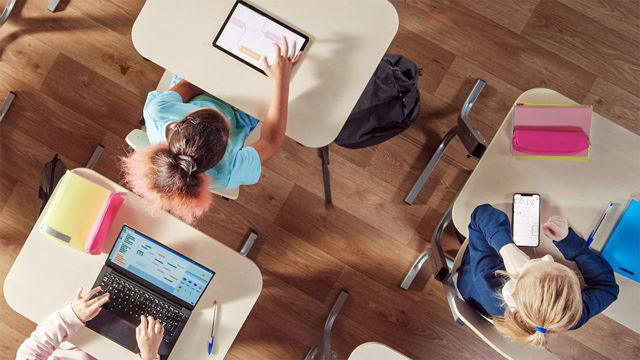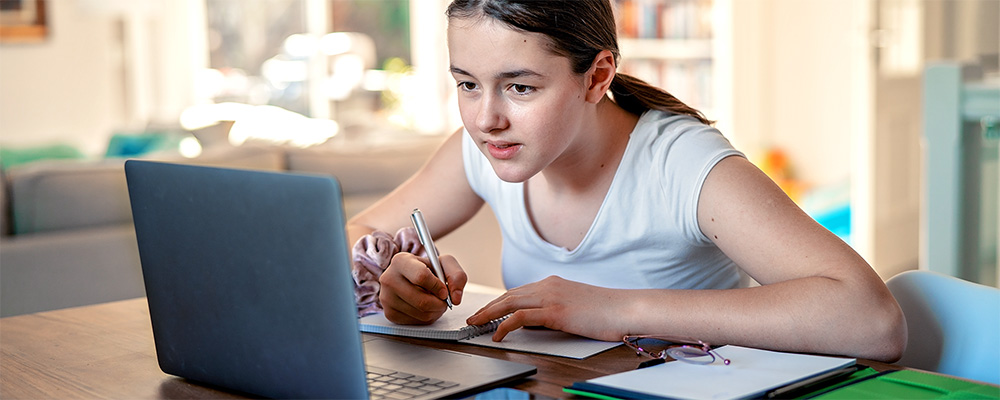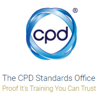
Ultimate guide to: The digital classroom
Digital tools are transforming the way in which teaching and learning is achieved. Read our guide to find out more about digital classroom technologies and virtual learning.
14 February 2022
When you ask your child what they’ve been doing at school, do you always get an answer? Throughout 2020 and 2021, parents with school age children got a glimpse into the work their kids were doing at school. We also had to get to grips with some of the digital tools in the classroom that educators use on a regular basis, and how to use virtual classrooms and the digital technology that goes with it.
Despite schools being open again, digital teaching via virtual classrooms and the use of digital learning technology has made it easier for us all to keep up to speed with our children’s education.
In this blog we’ll take a look at digital classroom technology that’s available and the potential benefits and drawbacks it might have on your child’s learning journey.

What is a digital classroom?
A digital classroom is a learning environment that relies on using digital devices and software to help to facilitate and deliver lessons. They don’t have the same constraints as a physical classroom, so students could potentially learn from anywhere and anytime.
Digital classrooms can be used in addition to what’s being taught in a physical classroom to support the learning by using educational apps and websites. This sort of technology has been vital in helping us to keep our children on top of their education when they weren’t able to go to school.
Digital technologies in the classroom
Digital classroom technology comes in a variety of formats, including hardware, software and educational websites. Here’s a quick overview of some of the digital technology you might find in the digital classroom:
Physical devices that can be used to enable learning to happen, such as:
- desktop computers
- laptops
- tablets
- smartphones
- digital whiteboards
- smart projectors
There are lots of other online tools you can use to help with learning too, including things like video conferencing platforms, Google Classroom, and a huge variety of learning platforms that cover a range of lessons across the curriculum.
Many schools subscribe to a parent-teacher communication platform to help keep in touch with students who are learning at home, or simply to keep families informed about their child's school life. These platforms can be accessed by both teachers and students – depending on the child’s age.
These types of platform show a varying amount of information depending on the subscription the school has chosen. This could include things like attendance, school reports and important messages like upcoming closures or lunch menu changes.
Some schools will subscribe to multiple educational platforms, covering different parts of the national curriculum such as English, Maths and Modern Foreign Languages. They’ll use these in addition to their chosen communication tool if that platform doesn’t include lessons etc.
Despite schools reopening, the use of these platforms continue to aid communication between school and home. You might have decided to make home schooling more permanent or your child’s class has been sent home to isolate. Equally, your child might have a passion for a specific subject that you want to nurture.
Some children thrive learning in different environments and some schools might continue using these platforms for homework too. They might even help your child prepare for the next step in their education.

What is a virtual classroom?
A virtual classroom is a classroom that isn’t a classroom – it’s wherever you are that you’re learning. It could be your home office, your bedroom, or even on the bus. Virtual classrooms might have other students in them, or you could be alone, and you’ll usually join one through a video conferencing platform. Lots of students joined virtual classrooms during lockdown.
In a virtual classroom, the teacher will take lessons using a variety of tools that might be available to them. They can share their screen, have interactive polls, and even link to further reading for homework purposes. In fact, the virtual classroom uses many of the tools that you expect to see in a digital classroom.
Using video conferencing in the virtual classroom means that the teacher and the students can see each other. Teachers can see if you’re engaged with what’s being taught, or if anyone has any questions or looks confused.
Advantages of digital tools for the classroom
Digital tools in the classroom can bring many benefits for both learners and teachers, but there are some things to be mindful of too. Here’s a quick overview of some of the benefits digital learning can offer:
1. Personalised learning
Digital technologies in the classroom enable learning providers to personalise teaching to meet the needs of individual learners. Lessons can be tailored for individual students easily using technology. For example, some students might need a bit of extra help if they have a disability. Assistive technology (AT) can be incorporated into a digital or virtual classroom to help bridge any gap there might be. Read this blog to find out more about AT in the classroom.
2. Abundant information
Information can be shared instantaneously, and fact checked quickly in a digital classroom. Students can access the internet and the vast libraries of information held there to get the information they need quickly.
3. Greater engagement
The digital classroom does away with the old-school dusty blackboards, whiteboards and handouts, replacing them with interactive tools to help students engage together. Students can interact with the lesson far easier than before, using features available in the virtual classroom such as live chatting, and reaction buttons.
Any handouts can be sent electronically making them easy to find, and reduce the risk of them getting lost. Unfortunately, with paper being replaced, it does mean you can’t blame the dog for eating your homework!

4. Flexible learning
A key advantage of digital teaching methods is the flexibility it offers to teachers and students. Teaching can be adapted to the needs of individual students and the pace of teaching and learning can be adapted to suit the needs of each student.
Virtual classrooms mean that students don’t always need to attend a physical classroom either, meaning they can save time and money on travel, and it can open up learning to people with physical difficulties who might usually struggle.
5. Lessons are recorded
Digital classrooms enable lessons to be recorded - and then replayed whenever needed which can be really helpful for students to revisit their classes exactly as they occurred - without needing to rely on their notes. It’s helpful for the teacher too, they can use past lessons to help them plan for future lessons too, knowing what worked well, and what can be improved.
6. Progress tracking and reporting
Student progress can be monitored using digital classrooms, things like attendance, test results and coursework can all be tracked easily. This data can then be used to create reports to analyse how each doing student is doing – highlight any who might need a bit more help in certain areas, and others that might be progressing quickly and need new challenges.
Disadvantages of digital tools for the classroom
There are many advantages to using digital tools and virtual classrooms, but there are a few things to be mindful of:
1. Minimal face to face interaction and social isolation
Digital tools can result in students spending more time glued to screens than interacting with others especially in virtual classrooms. With a lack of face to face contact online learning, students can become socially isolated. Teachers can help their students to keep communicating by using all available interactive features, including having cameras turned on, and using the chat tool. Be sure that you follow any safeguarding rules that may be in place for your class.
2. Technical issues disrupt learning
Network issues, internet access problems and failing hardware can all disrupt online learning. Many of us have had issues with this over the last few years, and sometimes there’s nothing you can do to avoid technical difficulties. Making sure your devices are regularly updated with the latest security fixes, and knowing how to check your internet connection can be helpful to avoid some disruption.

3. Equipping a digital classroom can be costly
The costs involved in equipping a classroom with all the necessary hardware and software to go digital can be expensive. As well as being costly for schools and other educational settings, not all students will have access to the digital devices they need to get online to take part in lessons either. In fact, according to research by Ofcom, one on five children who had been home-schooled during 2020 didn’t have access to an appropriate device for their learning all the time. Three percent of which were unable to do their schoolwork at all.
4. Successful online learning requires motivation
Online learning takes self-discipline and motivation. It’s very easy to get distracted by other things – especially if there’s a lot going on around you. Other digital devices can cause distractions too, such as mobile phones and other people in your house. It can be helpful to turn off notifications for things that aren’t urgent, and to book in breaks to help you stay focused.
Digital classrooms and online learning has opened up opportunities for people who want to learn a new skill or help parents get closer to what their children are learning at school.
There’s more opportunity than ever for anyone of any age to learn something new from home.
Google Classroom is a trademark of Google LLC.
This document is an independent publication and is neither affiliated with, nor authorised, sponsored, or approved by any of the brands mentioned within it. All trademarks are the property of their respective owners. There are other services available and Barclays does not specifically endorse or recommend the use of the services mentioned in this document.

